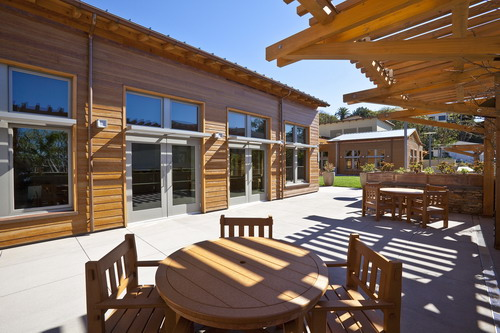Embodied Energy: How Green Products Fare
Thu, Jul 23, 2009 Ryan Cadd Embodied Energy, Ryan Cadd, Photovoltaics, Green Building, LEED, Sustainable Lifestyle
The embodied energy of materials is the amount of energy it takes to harvest, produce, transport (by sea, air, or road) and install a certain material. More and more we see an increased awareness, from our clients, of what is called the life-cycle cost of a material  or system. This helps determine the true cost of a material or system over its life, and helps determine payback time, such as the use of photovoltaic panels and the time it takes for the system to pay for itself. On the front end of the life-cycle cost is a material's embodied energy.
or system. This helps determine the true cost of a material or system over its life, and helps determine payback time, such as the use of photovoltaic panels and the time it takes for the system to pay for itself. On the front end of the life-cycle cost is a material's embodied energy.
Some common building materials that might be otherwise considered ‘green' such as steel and aluminum for their high recycled content, have to be looked at more closely because of the immense amount of energy it takes to produce them upfront. Conventional wood framing used in construction has an embodied energy much lower, roughly one third less, than that of steel, and roughly one quarter less than aluminum, which is produced through a very labor intensive process. Again though, when looking at which materials to use, the ultimate decision comes down to what the most beneficial material for the situation is, what the life cycle payback of that material will be and for how long it will last.
This brings us to the importance of harvesting and producing a material locally, which is one of the few things in LEED that is covered in the area of embodied energy. Bamboo, which is considered to be one of the greenest products available, has high embodied energy for the fact that the majority of it is harvested and manufactured in China, then shipped across the ocean on boats, which in turn use large amounts of fuel. This negative must ultimately be weighed against the alternative, using a wood that is locally grown and harvested, but that won't reach full growth again for 150 years, versus less than 10 years typically for bamboo.
Embodied energy is something that should be more closely looked at before we're all too quick to call something ‘green.'
Ryan Cadd is a Technical Designer at California-based design firm LPA Inc. He is a LEED Accredited Professional, who specializes in Northern California K-12 Schools.